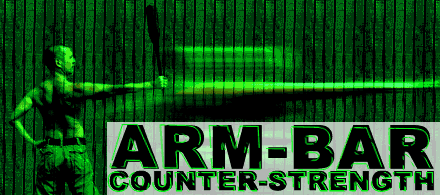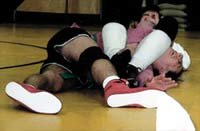
With my background in Sambo competing and coaching internationally, I originally developed the Clubbell? as a means of Specific Physical Preparedness (SPP) for combat sports. This article describes the theory supporting SPP...
With my background in Sambo competing and coaching internationally, I originally developed the Clubbell? as a means of Specific Physical Preparedness (SPP) for combat sports. Now, the Clubbell? like a contagion has spread to other styles of grappling used by amateur and elite alike, such as World BJJ Champions, Egan Inoue and Steve Maxwell; as well as into MMA and NHB fighting in the hands of UFC Winner Andrei Arlovski. This article describes the theory supporting SPP, and one routine for successfully implementing Clubbell? training to enhance the performance of your fighting. Submission grappling demands an unusual profile of attributes. It requires strength at extreme ranges, explosiveness as awkward angles, endurance at inconvenient times, and agility during surprising moments but most of all, it absolutely dictates one have dynamic mobility to move with power in three dimensions.  Stimulation Not Simulation   But most of all, I needed to craft a system which could augment SPECIFIC rather than GENERAL attributes of various fighting technique and movements. This required that I focus upon STIMULATING the approximate the range and depth of the skills, without mimicking the skills themselves. But most of all, I needed to craft a system which could augment SPECIFIC rather than GENERAL attributes of various fighting technique and movements. This required that I focus upon STIMULATING the approximate the range and depth of the skills, without mimicking the skills themselves.SIMULATING the actual skills with a resistance load registers in your central nervous system as a NEW SKILL. The new skill then competes with the actual grooved skill and vies for dominance... and thus not only doesn't contribute to but actually adversely interferes with your performance.  Work Capacity Versus Work Sophistication  Unfortunately when people hear SPP, they assume "Sport Specific Training". In other words, they assume that the exercise only has value for the intended sportskill. No one would find any use in performing exercises on a $14,000 machine which adds resistance to a golf swing, unless they intend to play golf (and even then, research proves that this actually diminishes swing performance since it involves SIMULATION rather than STIMULATION!) Some people assume that the only value of training is increased work capacity... the ability to be more functional in any activity - also known as General Physical Preparedness. This crude misunderstanding of the nature of strength develops from the KISS mentality (Keep It Simple Stupid.) Large, basic lifts increasing "overall" strength still inundate the minds as the target of all training. However, the difference between GPP and SPP involves one of sophistication. Sophistication here means General PP moving towards Specific PP, with the operative phrase here of MOVING TOWARDS. When one increases work capacity through a particular means, one can take that development and refine it (say 'moving from' basic squats to jump squats to fireman carry sprints; or incrementally from the Rock-it Drill to Swings to Pendulums to Swipes).  Arm-Bar Counter Strength Routine  The value of the exercise CAN be specific to a skill or family of skills, though, but this is STILL DIFFERENT FROM "sport specific training" as it is conventionally practiced. For instance, one of the basic combination routines with which I coach submission grapplers is called Arm-Bar Counter-Strength. The armbar is a high-percentage gross-motor submission hold in grappling, mixed martial arts, and no-holds-barred fighting. Arm-Bar Counter-Strength hits the range and depth of motion used in defending against and recovering from armbar attempts by your opponent; especially effective at developing the reactive strength, agility and coordination necessary to thwart armbar attempts. The exercise begins with one heavy Clubbell? moved from Parry Cast into Back Position. You will see nearly instant compensatory power in the extreme ranges of motion typical of armbar attempts. |





Комментариев нет:
Отправить комментарий